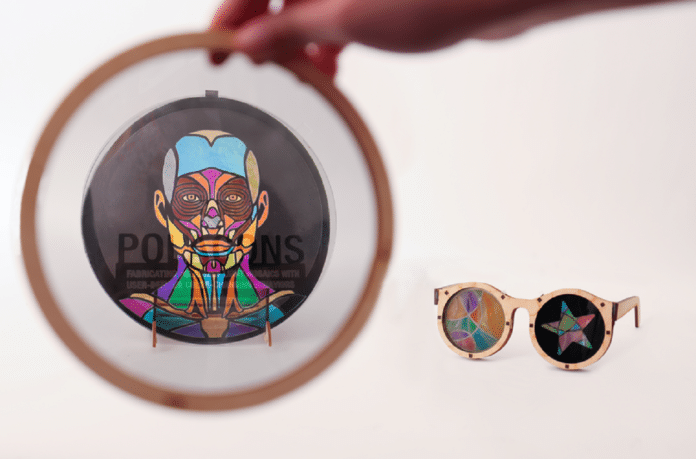Traditional painting methods involve coating surfaces with pigments, inks, and dyes to produce artistic imagery. Some artists experimented with light as a new painting medium in the 1960s.
The materials used by these artists had unique qualities that allowed them to alter their appearance based on the polarization of the light that passed through them. When a material with this property is sandwiched between two polarizing filters, it appears to be colored even though it is colorless.
Individuals can use a new design tool developed by MIT researchers to create polarized light mosaics that can be printed on cellophane to create data visualizations, passive light displays, mechanical animations, fashion accessories, educational science and design tools, and more.
Ticha Melody Sethapakdi, a Ph.D. student in electrical engineering and computer science at MIT and an affiliate of the CSAIL, is leading the use of regenerated cellulose to create Polagons. Polygons are machine-made color-changing mosaics that use polarized light to inform and delight.
Artists inspired Sethapakdi like Austine Wood Comarow, whose inventive “polage art” is based on the same physics principles, whose polarized light mosaics have previously been created by hand.
The new computational Polagon design system enables a laser-cutting and welding fabrication process with minimal user assembly. Users first import custom mosaic designs, and the system computes the feasible color palette given the user’s cellophane supply. Users can create “morphing” mosaics that transition from one image to another by uploading multiple designs to the interface.
Then comes the logistics: Polagons optimizes the necessary constituent components for each scenario, like the type and number of sheets needed. After uploading designs, experimenting with colors, and visualizing color-changing behaviors, the user can export the fabrication files and cut them up with a laser cutter.
Cellophane has a property called birefringence, meaning that when light passes through, the speed of light differs depending on the propagation angle. When the sheets are placed in a “sandwich” of two polarizers, the material’s color depends on its thickness and angle relative to the two polarizers. To create this effect, you need to rotate the image or polarizers, changing the angle of light propagation.
The team is interested in democratizing this art form and helping preserve something that might only be accessible to skilled individuals. They believe that 3D Printing, a birefringent material to access a more extensive palette and have more control over the colors, could be a potential solution to changing the fabrication process to support a constant mode of building colors.
Sethapakdi said, “Perhaps, in the future, since these designs are non-electronic, they could enable interesting underwater applications, where you put these types of mosaics in places that might be difficult for electronics to stay in. That’s what’s special here, that all of these color-changing effects are mechanical.”
Sethapakdi said, “In creating this system, I was mostly interested in democratizing this art form and helping preserve something that might only be accessible to skilled individuals. Suppose something happens to the creator of this layering principle, Austine Wood Comarow’s family. Does the art then die with them? If we didn’t have some way of preserving that or continuing it, then we would lose something that would be very precious to the world. I think there is a real benefit to building these systems that democratize niche art forms. We hope this tool can expand the community of modern polarized light mosaicists. Since we are making this process accessible to a larger group of users, it can add new programmable material to the palette of options in [human-computer interaction].”
This tool will help to grow the community of modern polarized light mosaicists and add new programmable material to the palette of human-computer interaction options. The research will be presented at the 2023 Conference on Human Factors in Computing Systems (CHI 2023).
The result shows that Polagons can be used for fashion, education, and visualization with controlled color-changing behaviors. Polygons can support hundreds of colors using only a few types of cellophane.
Journal Reference:
- Ticha Sethapakdi, Vivian Chan, et al. Polagons: Designing and Fabricating Polarized Light Mosaics with User-Defined Color-Changing Behaviors. Link to paper
